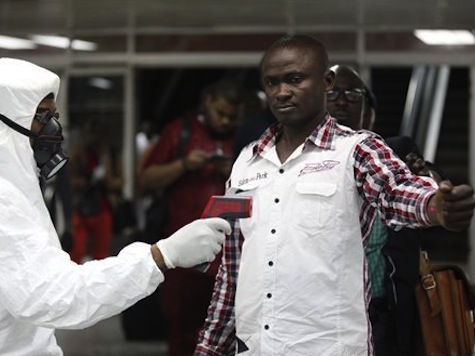
The largest Ebola outbreak in history, spanning five west African countries, continues to spread and threatens to engulf the infrastructures of multiple nations. The situation could get worse for the continent, according to one Oxford University study that finds animals carrying the virus are being eaten in at least 15 different countries at risk for an outbreak.
The Washington Post distills the results of the study, which focused on the migration and living habits of fruit bats, considered among the most dangerous carriers of Ebola. Fruit bats can transfer the Ebola virus to other animals like monkeys and rodents, all of which are often consumed in African countries as “bush meat,” a valuable source of protein in regions where the nutrient is difficult to come by.
Judging by the animal populations, researcher Nick Golding explains that the “likely ‘reservoir’ of Ebola virus in animal populations” and where humans come into contact with them paints a troubling picture. That reservoir of Ebola, waiting to be tapped by a hunter catching a contaminated animal and eating it undercooked, is “larger than has been previously appreciated,” according to Golding.
And that reservoir affects up to 22 countries, including those currently battling the virus: Guinea, Sierra Leone, Liberia, Nigeria, and the Democratic Republic of Congo. All cases in West Africa can be traced back to one patient, a child in rural Guinea. The cases in the Democratic Republic of Congo are believed to be a second outbreak triggered by a different instance of humans eating bush meat; the current death toll there stands at 35, significantly less than the 2,288 killed in West Africa.
The other nations the study considers at risk for the virus include areas with significant poverty, which would face major challenges in establishing the sufficient number of facilities to treat an outbreak the size of the one in West Africa. These include Angola, Malawi, Central African Republic, South Sudan, Ethiopia and others, totaling 15. Others, like Tanzania and the Republic of Congo, are threatened “by geography,” the study claims, meaning the potential of a visitor from a neighboring country carrying the virus is high.
Adding to the complexity of the threat is the potential for as many as 250 different strains of Ebola to spread across the continent. While most have never affected humans, they remain active in animal populations.
Affected nations fear that the virus could destroy the infrastructure of their nations entirely. “Liberia is facing a serious threat to its national existence,” Liberian Minister of National Defense Brownie Samukai stated, warning that the virus was “devouring everything in its path” and that the exponential growth in the number of cases within the past month was far more than the nation could handle. In Sierra Leone, the nation’s largest newspaper, the Awareness Times, reports of residents protesting over dead bodies being left on the streets of the capital, Freetown, with not enough law enforcement or medical personnel to take care of the devastation. Liberians did more than protest the dead bodies staying on the streets; angry mobs attacked law enforcement and have even stormed medical facilities protesting Ebola as a disease brought into the country by Westerners, and not bush meat.
In addition to the disorder in west African urban communities, economies are currently being ravaged by the disease. Quarantines have devastated local businesses, and the International Monetary Fund is warning that growth could fall by 3.5% nationally in both Sierra Leone and Liberia this year.

COMMENTS
Please let us know if you're having issues with commenting.